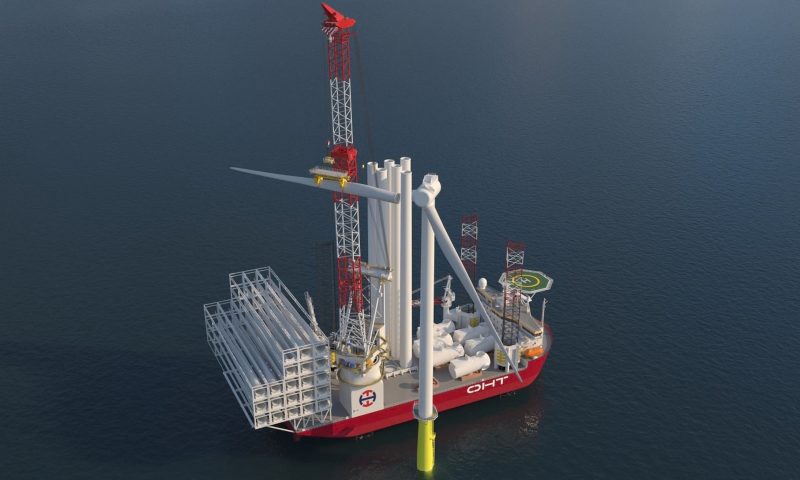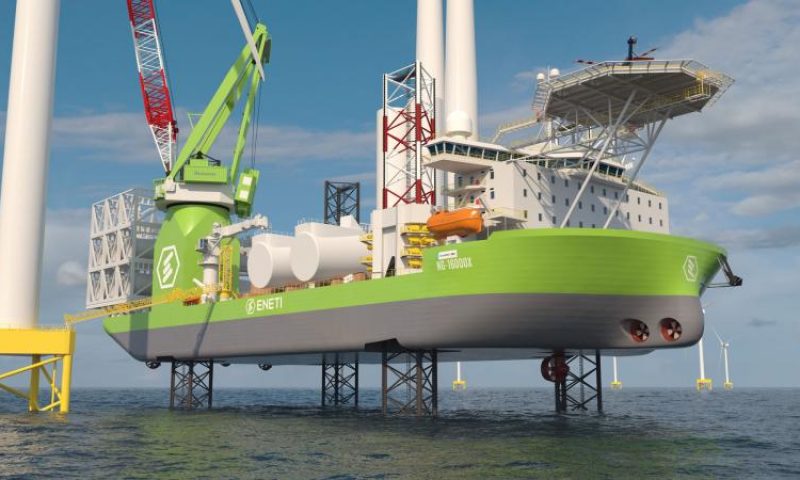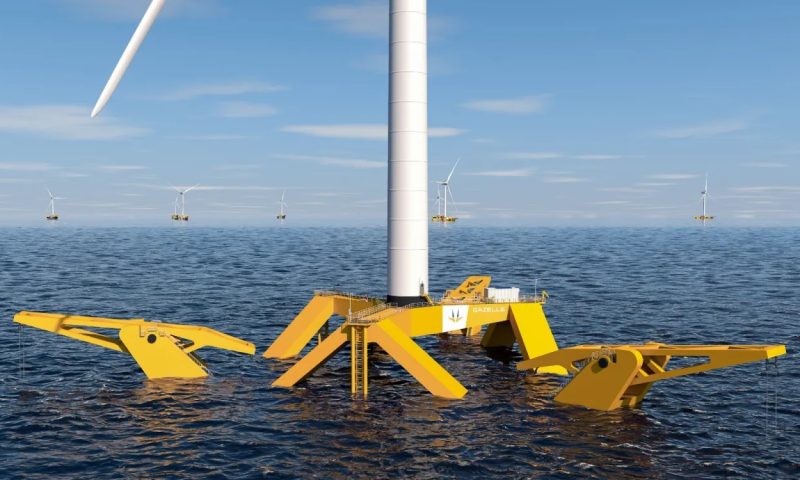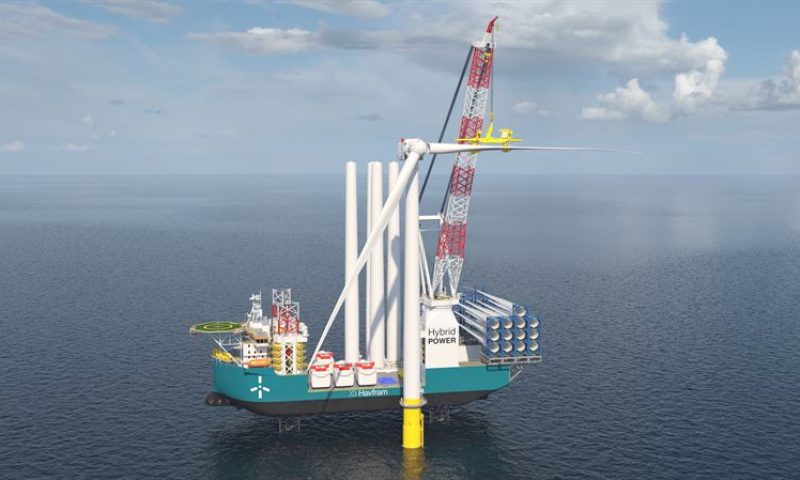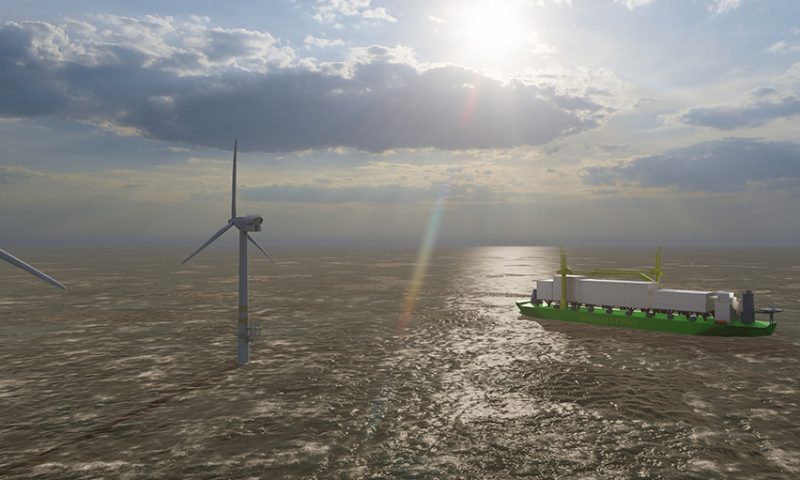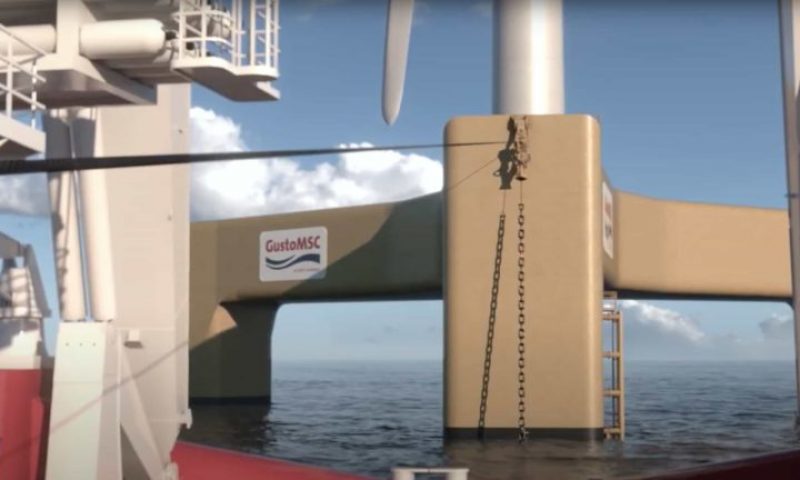
GustoMSC Presents Tri-Floater, The Floating Wind Foundation Design
Well-established research companies state that we will be relying on oil and gas for 85% of our energy requirement in 2040. GustoMSC, believe they contribute to a sustainable future by conducting our operations in a safe and responsible manner. For example, by designing floating offshore wind turbines. In this article, Geir Olav Hovde (APL) and Maёl Gormand (GustoMSC) shed light on the pros and cons and the future of floating wind energy.
How do you see the future of floating wind concerning reducing CO2 emissions?
Geir Olav Hovde: Floating wind is one piece of the big puzzle of reducing CO2 emissions around the world. Offshore wind does not occupy important land areas for other uses and will also be out-of-sight and out-of-noise for people, and out-of-harm for birds. However, there are potential conflicts with aquaculture, military operations, and the fishing industry, but the further offshore and the deeper the water, the easier it will be to find compromises with other interests. In addition, many coastal areas do not have shallow water where fixed offshore wind is possible. In that case, floating wind turbines like the Tri-Floater offer an attractive alternative.
Maёl Gormand: Today, offshore wind offers the high capacity factors necessary to produce large amounts of renewable base power at a competitive price. But with bottom fixed wind turbines, this is only possible in Europe and a few other places. Floating wind is expected to remain more expensive than bottom fixed wind turbines. But it’s our ability to provide competitive renewable electricity prices to the areas that would otherwise not have access to this that matters. And the high potential for industrialization of floating wind makes it a perfect contender.
Will floating wind as a new market play a role in reaching a tipping point concerning the CO2 footprint?
Maёl Gormand: Floating wind is essential for reaching the tipping point. It can bring large scale renewable electricity production to the 50% of the world population who have no other choice. If, as an industry, we succeed in lowering our costs and increasing our throughput massively, then we will bring the economic renewable energy surge that the world needs to switch to wide-spread electrification.
Geir Olav Hovde: Floating wind, and then hopefully the Tri-Floater, will play an important role in this aspect. Fixed offshore wind will still be a large market, but many countries do not have access to shallow water suitable for fixed offshore wind, and other countries are already filling up their available shallow water sites. We believe floating wind will be the next big development in the wind industry.
How important is synergy between APL, GustoMSC, and other NOV subsidiaries in ensuring that the Tri-Floater is a success?
Maёl Gormand: Synergy is essential. What we have noticed during our many years of development is that floating wind is a highly integrated market. All systems need to be integrated into the engineering analysis because they all influence each other. That’s why our integration into NOV and its family of companies is so important. Together with APL, GustoMSC, and other NOV companies, we will ensure that the designs of the mooring system, the mooring connector, and the Tri-Floater are fully integrated for the best performance, and we will simplify the hook-up to the maximum.
Geir Olav Hovde: GustoMSC, APL, and other NOV subsidiaries have years of experience. We are very complementary in what we do and deliver, which means that NOV can fulfill most of the client’s wishes when it comes to the scope of supply and services. Within the NOV family, we know each other well and co-operate efficiently.






